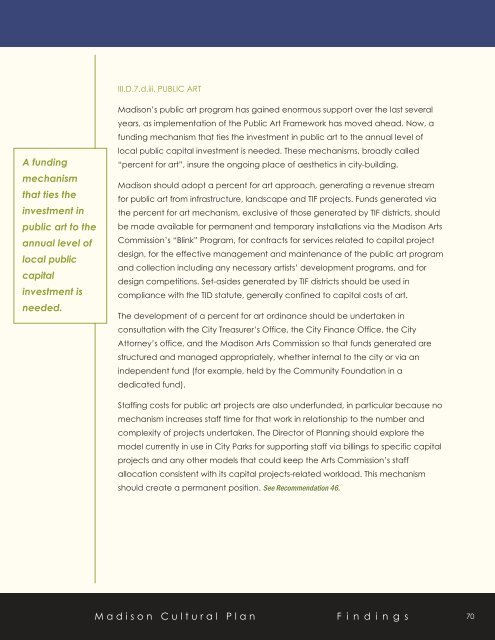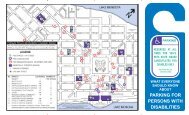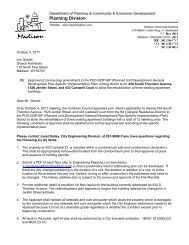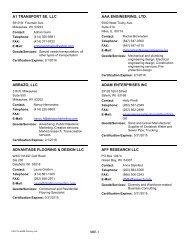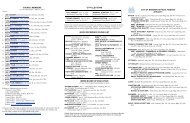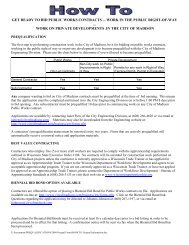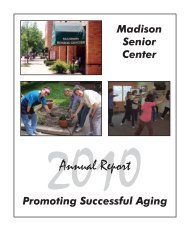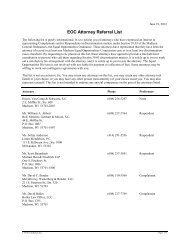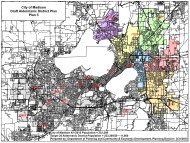Madison Cultural Plan 2011 - City of Madison, Wisconsin
Madison Cultural Plan 2011 - City of Madison, Wisconsin
Madison Cultural Plan 2011 - City of Madison, Wisconsin
You also want an ePaper? Increase the reach of your titles
YUMPU automatically turns print PDFs into web optimized ePapers that Google loves.
A funding<br />
mechanism<br />
that ties the<br />
investment in<br />
public art to the<br />
annual level <strong>of</strong><br />
local public<br />
capital<br />
investment is<br />
needed.<br />
III.D.7.d.iii. PUBLIC ART<br />
<strong>Madison</strong>’s public art program has gained enormous support over the last several<br />
years, as implementation <strong>of</strong> the Public Art Framework has moved ahead. Now, a<br />
funding mechanism that ties the investment in public art to the annual level <strong>of</strong><br />
local public capital investment is needed. These mechanisms, broadly called<br />
“percent for art”, insure the ongoing place <strong>of</strong> aesthetics in city-building.<br />
<strong>Madison</strong> should adopt a percent for art approach, generating a revenue stream<br />
for public art from infrastructure, landscape and TIF projects. Funds generated via<br />
the percent for art mechanism, exclusive <strong>of</strong> those generated by TIF districts, should<br />
be made available for permanent and temporary installations via the <strong>Madison</strong> Arts<br />
Commission’s “Blink” Program, for contracts for services related to capital project<br />
design, for the effective management and maintenance <strong>of</strong> the public art program<br />
and collection including any necessary artists’ development programs, and for<br />
design competitions. Set-asides generated by TIF districts should be used in<br />
compliance with the TID statute, generally confined to capital costs <strong>of</strong> art.<br />
The development <strong>of</strong> a percent for art ordinance should be undertaken in<br />
consultation with the <strong>City</strong> Treasurer’s Office, the <strong>City</strong> Finance Office, the <strong>City</strong><br />
Attorney’s <strong>of</strong>fice, and the <strong>Madison</strong> Arts Commission so that funds generated are<br />
structured and managed appropriately, whether internal to the city or via an<br />
independent fund (for example, held by the Community Foundation in a<br />
dedicated fund).<br />
Staffing costs for public art projects are also underfunded, in particular because no<br />
mechanism increases staff time for that work in relationship to the number and<br />
complexity <strong>of</strong> projects undertaken. The Director <strong>of</strong> <strong>Plan</strong>ning should explore the<br />
model currently in use in <strong>City</strong> Parks for supporting staff via billings to specific capital<br />
projects and any other models that could keep the Arts Commission’s staff<br />
allocation consistent with its capital projects-related workload. This mechanism<br />
should create a permanent position. See Recommendation 46.<br />
<strong>Madison</strong> <strong>Cultural</strong> <strong>Plan</strong> Findings<br />
70


